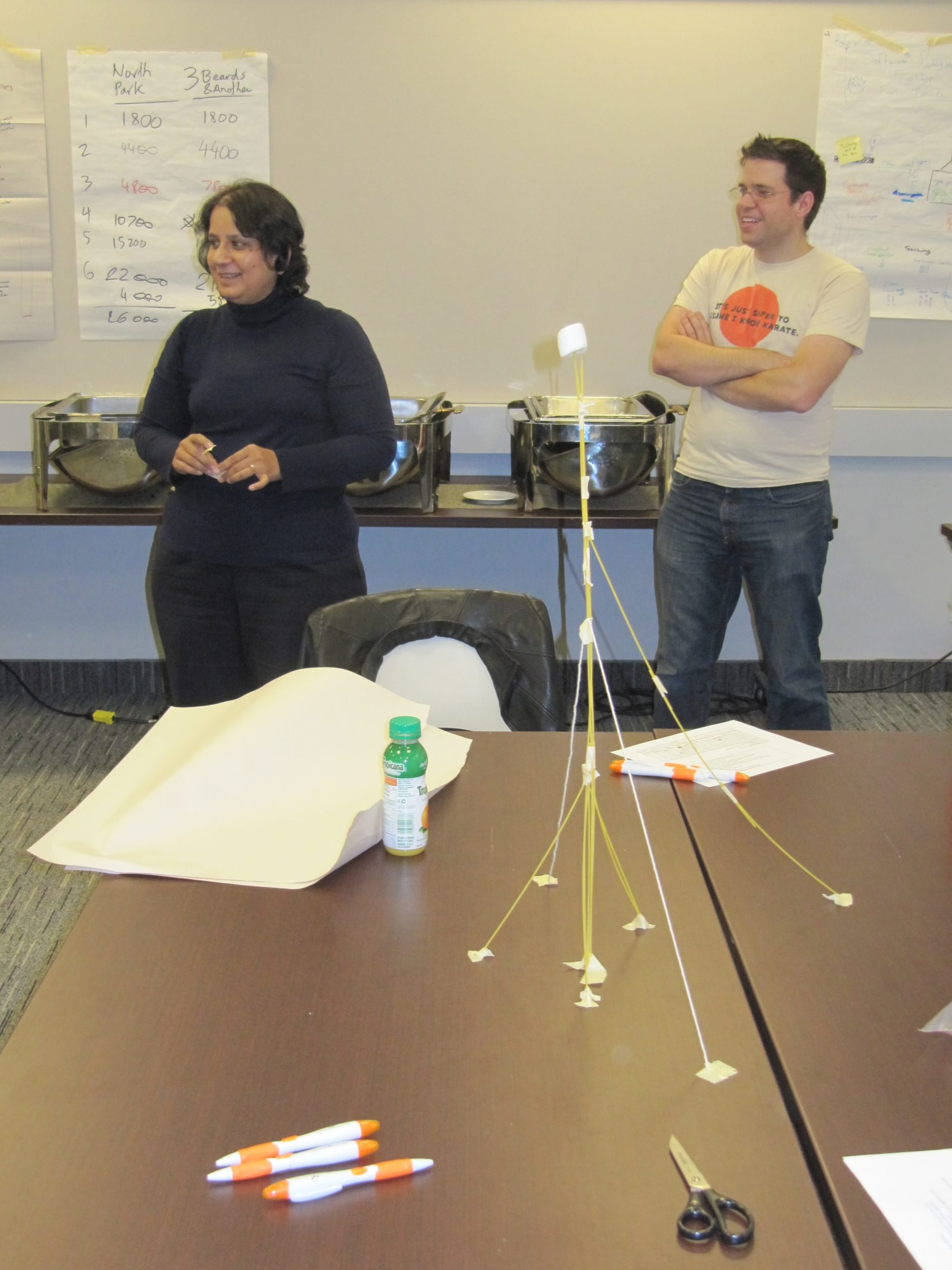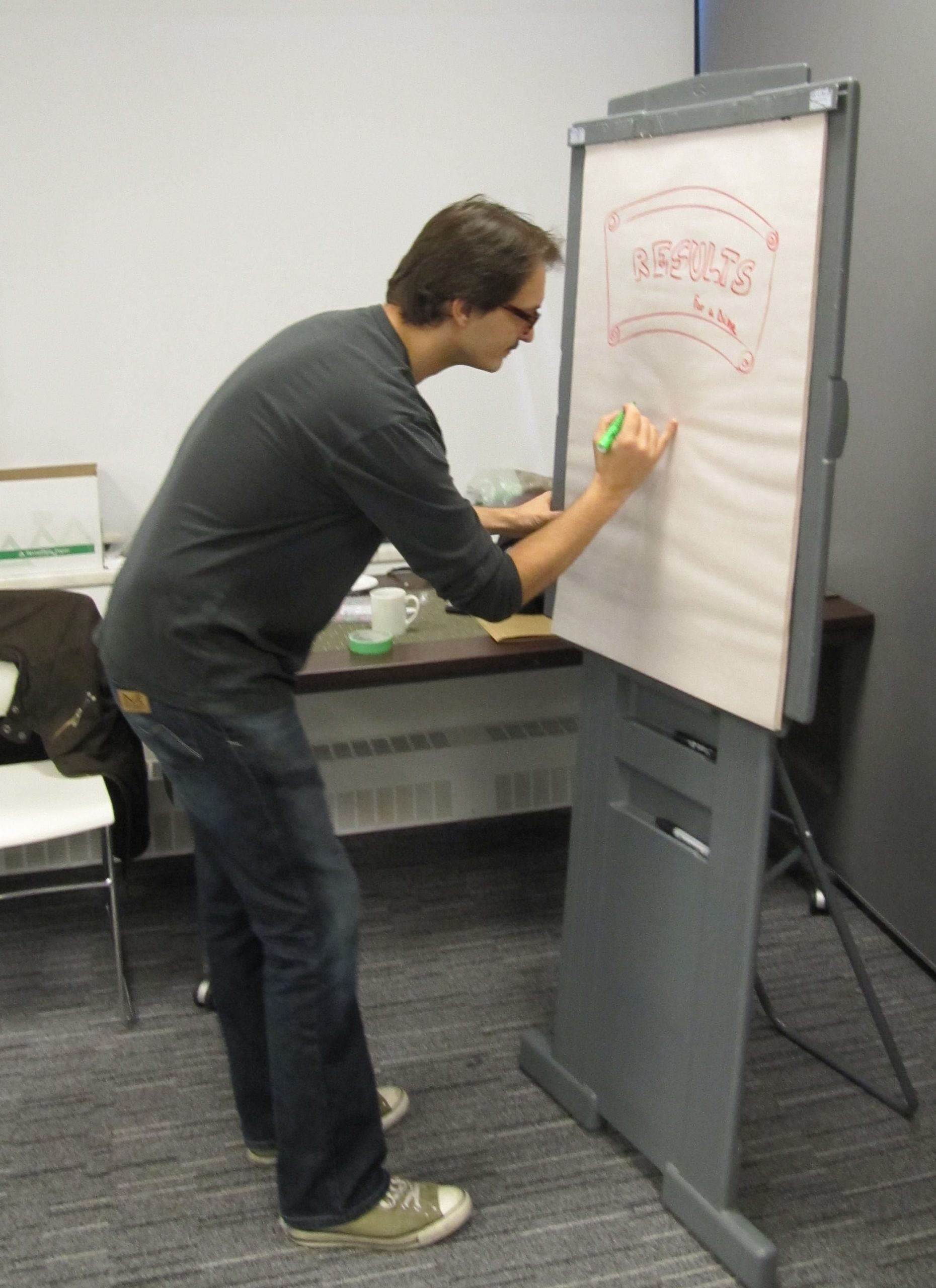Wow! Agile Games Day Workshop! What a great way to end Agile Tour Toronto! Here’s what people had to say about Gino Marckx and my workshop:
- “Fun, Energizing, Informative I liked adjustments during the day to our plan – nice! Facilitators checked in to see where group was at (all day – during games too)” – Alistair McKinnell, Agile Coach
- “Engaging, Fun, Self-discovery High energy personalities in delivery; not sitting all day and mixing the groups up” – Colin Bowern, Technology Coach and Solutions Architect
- “Fun, Engaging, Educational I liked the split from play to how to facilitate; the mixture of games and game lengths; the flexibility to adapt to the needs of the group” – Sarah, Coach
- “Engaging, Fun, Insightful I liked talking about different roles; it was laid back and fun; good energy and inspiring. – Nick Faulkner, Team Lead
- “Fun, Insightful, Amazing We adjusted as we moved through the day and we took longer where there was value” – Alex Aitken, Consultant
Mistake #1 – Too many games
It all started a week before when participants met online to play the Innovation Games® Buy A Feature game to select what games we would play. Gino Marckx and I provided a menu of 20+ games. The prices? We use the number of minutes for a session.
The first mistake was that we had too high a budget when playing Buy A Feature. I had worked out the approximate number of minutes and decided to budget 30% of the time so we would be a little under the total time. Problem was I forgot to change the default from 40% so we ended up with too many minutes.
How would you recover?
Gino and I used dot voting to prioritize the games selected so that we would play the most important ones first. Here is what we came up with. (Note: no votes for team games since we did this right at the start before the voting). The games are listed from top to bottom based on “ROI” (dots/time).
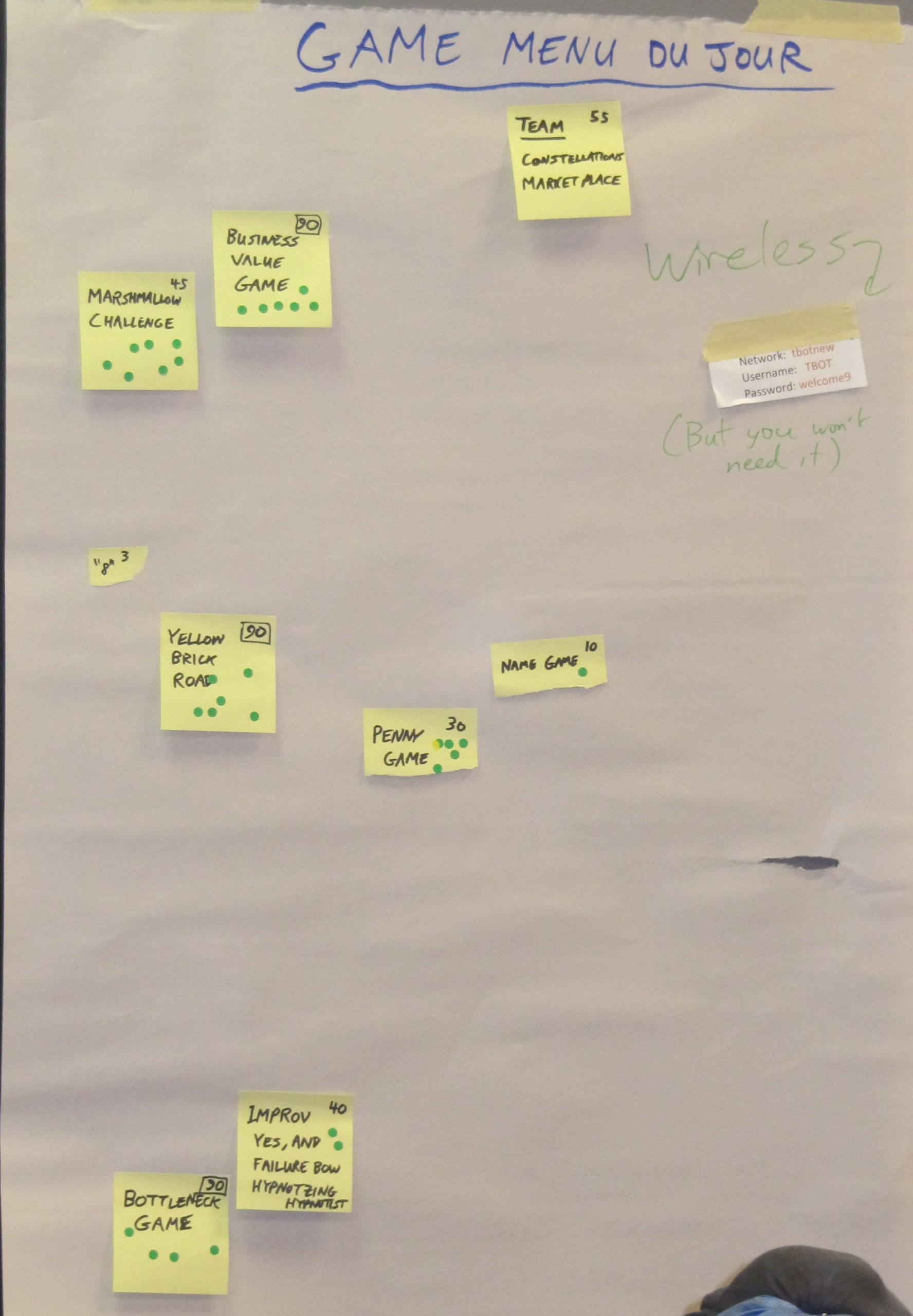
Mistake #2 – Budgeted times off by 40%
As the day progressed, it became clear that the time budgets we had allocated were too low. Way too low.
How do we know this? Well, having just finished a Kanban workshop, I created a control chart to track actual time in comparison to budget time. See photo below.
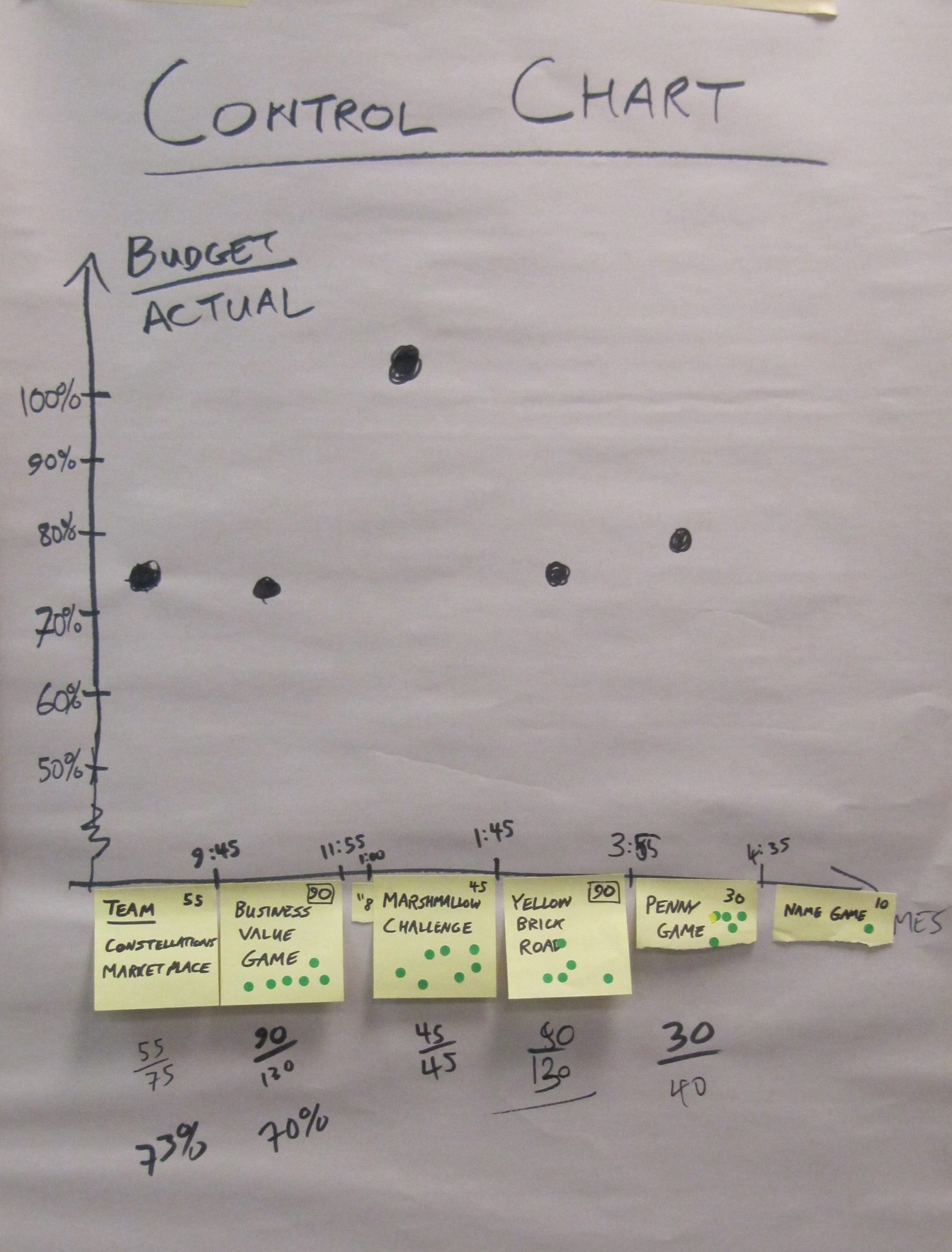
Root causes?
- When we were having valuable debriefs we kept going, rather than keep to our timebox.
- After each game was finished, we had a game facilitation discussion to talk about when you might play the game, setup needed, tips and tricks, etc. People found this very valuable.
- The games are tiring and people needed more breaks than planned.
- The two big games – Business Value Game (BVG) and Yellow Brick Road really benefit from having 2 hours instead of 1.5 hours. This is consistent with my earlier playings of BVG.
- Some of the games we were less familiar with.
The Games We Played
Here is a quick review of the games we played and when to use them. The full list of games is here.
Team Formation and Energizing
Constellations (30 min) is used to share team perspectives around values and beliefs. The information allows team members to help each other through challenge areas and provide hooks to talk about problems. We also played Tribes as a warmup but don’t have a description for this.
MarketPlace (60+ min) is used to inform team members about skills help by one another. This helps on many levels. First, you know where people are coming from. Second, you learn what skills and capabilities they bring to the project. Third, you may notice other things about them that can help the project succeed. Fourth, appreciating skills creates a powerful connection between the team members.
Play these games with all team members when you start working with them.
Product Backlog Management
Business Value Game (90+ min) helps players understand different views of value and think about the challenges of modeling business value. In particular it gets players to think about how to keep customers happy and balance technical improvements with feature delivery. It also hammers home the importance of reviewing acceptance criteria. Play this game with Product Managers/Owners and everyone involved in backlog prioritization.
Emergent Design
Marshmallow Challenge (45 min) helps players understand the benefits of incremental and evolutionary design. Teams that balance planning with experiments and learning about the problem domain do a lot better than teams that do a lot of upfront planning and no learning. Play this game to shift away from Big Design Up Front. This is suitable for all team members and especially important for Product Managers/Owners and Architects/Designers.
Developing Coaching Skills
Yellow Brick Road: Fresh Insights through peer coaching (90+ min) allows people to develop their coaching and observation skills so that they can help one another. A side effect of the game is that people can solve real problems. This is a good game to play with ScrumMasters, internal coaches and managers.
Value of working in small batches
Penny Game (30 min) is a fast and effective demonstration of how customer responsiveness can be improved through delivery of work in small batch sizes. It also highlights the importance of identifying organizational impediments to productivity and selecting high priority stories first to maximize ROI. I like to play the game when introducing teams to Agile and Lean/Kanban – especially to motivate user stories vs. big requirements.
Concurrent Projects delay delivery
Name Game (10 min) shows how delivering to multiple client projects at a time will give the perception of responsiveness but will lengthen delivery times. Great game to play with managers, project managers and Product Managers/Owners.
Multi-tasking reduces effectiveness
Multi-tasking (10 min) is a quick pen and paper exercise that illustrates how multi-tasking reduces the effectiveness for an individual. Play it with managers and team members that think working on multiple projects or multiple tasks is a good idea.
Some photos from our day of play
Business Value Game
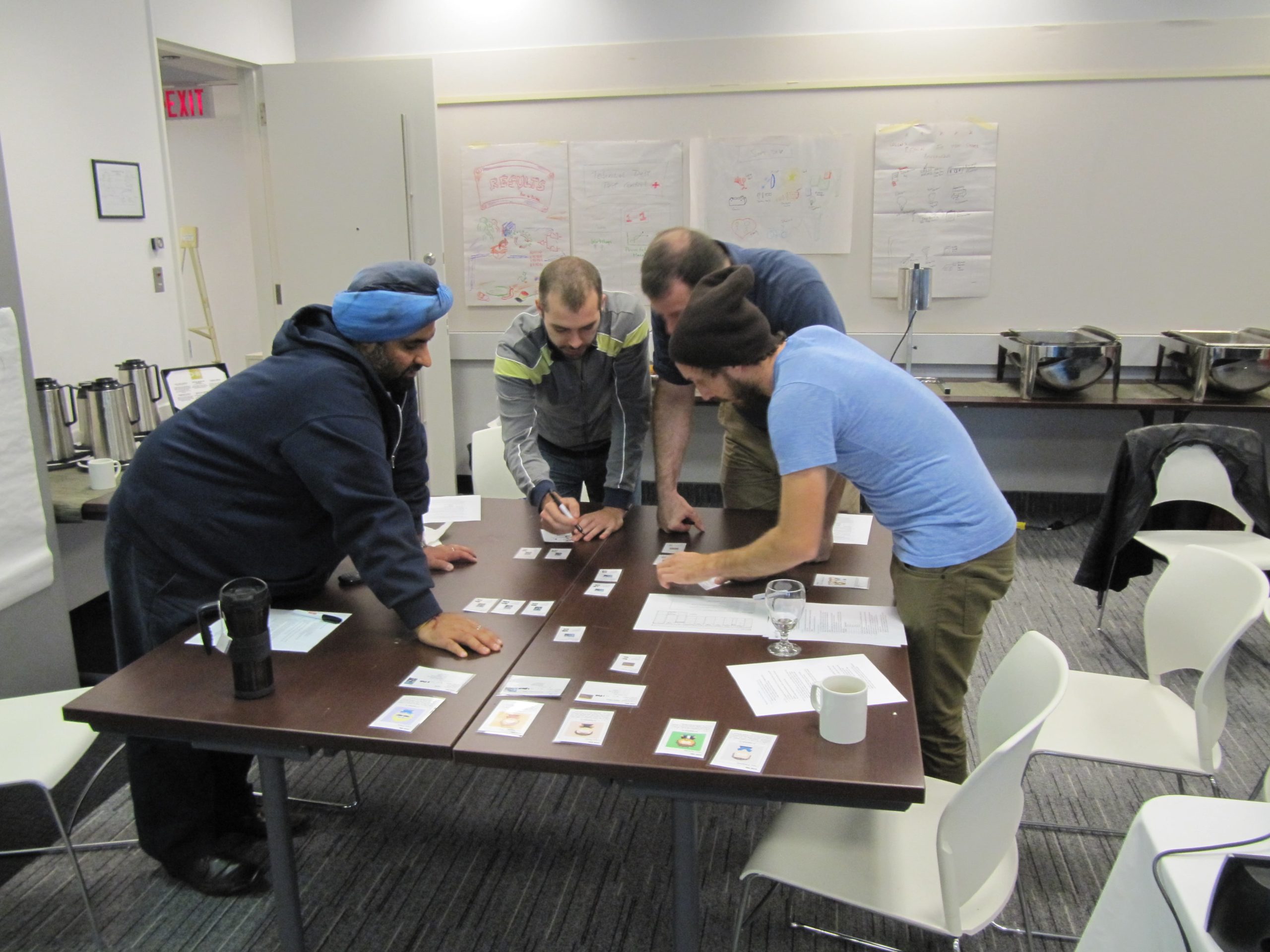
Marshmallow Challenge and Marketplace
